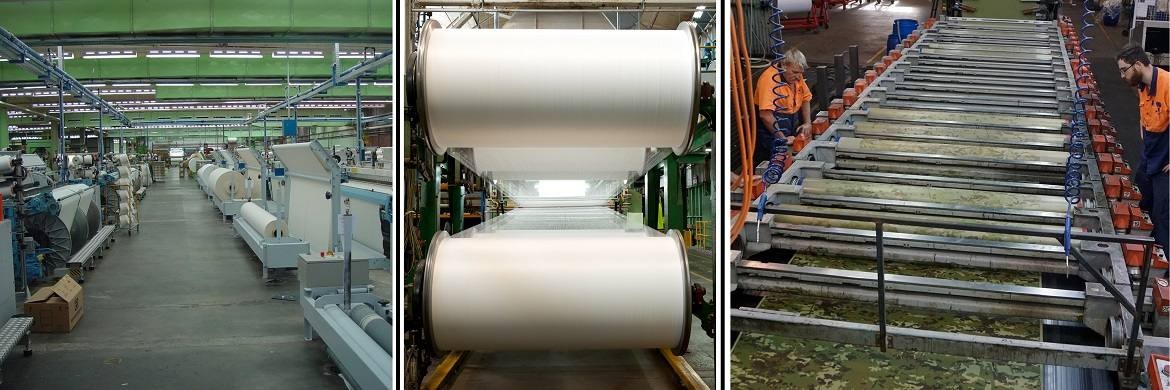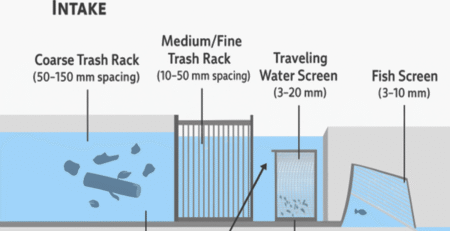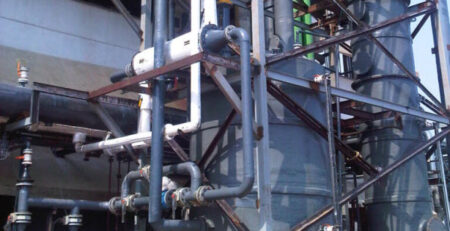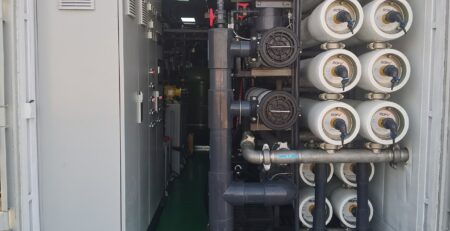Textile Dyes; Dying process and Environmental Impacts
Do you know that after the U. S., Australia is the world’s second-largest user of textiles per capita?
Textile dyes are pigments that are used to colour textiles. The dyes seep into the cloth and chemically alter it, resulting in a color that will not fade with repeated usage. Textile dyes are made up of about 10,000 distinct chemicals, and various dyes perform better on different types of fabrics. Dyes fall into two categories;
- Natural Dyes: Obtained from natural ingredients
- Synthetic Dyes: Manufactured in a laboratory
1. Natural Dyes
Until 1856, when the first artificial dye was invented, the only dyes available to people for textile dyeing were those derived from natural sources like leaves, minerals, roots, bark, and insect secretions. Consumers that care about the environment choose textiles that have been dyed using natural dyes. Natural dyes make only around 1% of the textile industry’s entire contribution. This is owing to special technical and sustainability constraints involved with the creation and use of certain dyes, such as machine incompatibility and restricted and non-repeatable shade ranges. Natural dyes are considered to be sustainable as they are biodegradable and renewable, but they cannot keep up with the tremendous demand of the textile industry.
2. Synthetic Dyes
Until 1856, dyes were made from natural sources. However, as requirements and demands increased, businesses grew reliant on colors made from petrochemicals, i.e. synthetic dyes. When compared to natural dyes, these dyes are water-soluble, easily absorbed, and color extremely quickly, and they offer a wide range of hues.
Synthetic dyes include;
Basic Dyes
- Basic dyes are mostly used to colour acrylic fibres. these are usually water soluble. Basic dyes, with the exception of acrylic, are not good for any other fabric since they are not resistant to light, washing, or sweat.
Direct Dyes
- Without the use of mordents, direct (substantive) dyes color cellulose fibres directly. They are used in dyeing silk, wool, nylon, cotton and rayon. Although they are quite responsive to light, such dyes are just not very brilliant and have low washing fastness.
Mordant Dyes
- Mordants, often known as chromium dyes, are acidic in nature. They’re generally employed for wool that’s been treated with mordant dyes and has an excellent color fastness. Cotton, linen, silk, rayon, and nylon are also utilized, although they are less effective.
Vat Dyes
- Vat dyes are water insoluble and cannot be used to colour fabrics directly. The initial vat dye is indigo. For cotton, linen, and rayon, such dyes are the quickest.
Reactive Dyes
- Originally, reactive dyes were exclusively used on cellulose fibres, but they are now utilised on wool, silk, nylon, acrylics, and their mixtures.
Disperse Dyes
- These are insoluble in water. These dyes were created to colour cellulose acetate, but they are now used to color nylon, cellulose triacetate, or acrylics
Sulphur Dyes
- Sulphur Dyes are insoluble unless they are treated with caustic soda along with sodium sulphide. These colours are typically used on cotton and linen because they are resilient to light, washing, and perspiration.
Pigment Dyes
- Despite pigments aren’t really dyes in the traditional sense, their remarkable light fastness makes them ideal for colouring textiles such as cotton, wool, and other manufactured fibres. They have no attraction for fibres and are attached to the cloth using resins. The textiles are treated to high heat once they have been dyed.
Dyeing Procedure
The dying process is among the most critical parts of the successful textile trade. Aside from the beautiful color and style, the consumer is usually seeking certain basic product attributes, such as light, perspiration, and washing resilience, either during or after prolonged use. The chemicals that color the fabric should have a strong affinity, a consistent hue, be resilient to deterioration and be cost-effective to attain these attributes.

The processes of dyeing haven’t changed much throughout time. Cleaning, dyeing, and imparting auxiliary chemicals to clothing, as well as rinsing treated fibres or textiles, are all done using water. In the current dyeing process, chemical structure, classification, commercial availability, fixing qualities appropriate for the particle to be coloured, economic concerns, and other aspects all play a role.
1. Preparation
It is the process of removing undesirable contaminants from materials prior to dyeing. Aqueous alkaline solutions and surfactants, as well as enzymes, can be used to clean. To remove their natural color, many textiles are bleached with hydrogen peroxide or halogen compounds, and photosensitizer chemicals are applied if the cloth is solid white and not coloured.
2. Dyeing
This involves the aqueous deposition of color to textile surfaces, primarily using chemically synthesized organic dyes and, in certain cases, at high temperatures and high pressures. It’s important to remember that no dye can color all known fibres, and no fiber can dye all existing dyes.
Surfactants, electrolytes, acids, alkalis, carriers, levelling agents, promoting agents, chelating agents, emulsification oil, softeners, and other chemical aids are added to the textile at this step to provide a consistent depth of color with fastness properties suitable for the fabric’s final use. Adsorption on the cell’s external surface precedes the colour’s subsequent diffusion into the liquid phase.
Different fastness qualities may be required depending on the anticipated end usage of the materials.
1. Finishing
It entails applying chemical substances to the cloth in order to improve its quality. Finishing includes;
- Waterproofing
- Softening
- Antistatic protection
- Permanent press treatment
- Dirt resistance
- Stain treatment removal
- Microbial/fungal resistance

Environmental impact of Textile dyes
The textile sector is thought to be the greatest source of colored wastewater. The textile manufacturing industry is one of the most polluting industries in the world. During the dyeing process, around 10-15% of the colors used are released into the polluted water. High quantities of textile dyes in aquatic environments smother the recipient water’s re-oxygenation capacity and block sunlight, disturbing aquatic life’s biological activities as well as aquatic species or algae’s photosynthetic processes. Because of their long-term persistence in the environment, deposition in sediments, notably in fish and other aquatic living creatures, degradation of contaminants into carcinogenic or mutagenic compounds, and limited aerobic biodegradability, dyes can damage the aquatic environment. An average t-shirt consumes 16-20 litres of water during and after the dyeing process, implying that the worldwide textile sector releases 40,000–50,000 tons of dangerous chemicals in the water every year. The biggest environmental damages created by the textile mills are those generated by the wastewater discharges effluents into watercourses which typically account for 80 percent of total of the total emissions generated by this industry.
Impact on human health
Dermatologists have documented examples of skin irritation caused by textile colors interacting with the skin. Some reactive dyestuffs have also been documented to induce contact dermatitis, allergic responses, rhinitis, or asthma in textile industry workers due to their tendency to combine with serum albumin, resulting in a dye conjugate that can behave as an antigen. This antigen triggers the production of certain immunoglobulin antibodies, resulting in the release of molecules like histamine, which trigger allergic responses. Contact with dyestuff dust must be avoided either by using aqueous dyestuffs, low dusting formulations, or adequate worker protection machines to limit this dangerous impact. Certain dyestuffs as well as auxiliaries have been shown to be hazardous for a long time. Allergies to textile dyes include contact dermatitis, respiratory infections, allergic responses in the eyes, rashes on the skin, and irritation of the mucous membranes and respiratory tract. Workers who dye textiles are more likely to develop these diseases since they are subjected to chemicals all day. These laborers are starving for a chance to dress up.
Impact on fish
Gambusia affinis demonstrated a significant decrease in fatality and cytotoxic activity on RBCs, as well as a decrease in their numbers, % alterations in form (poikilocytosis), and size variation. Another study found that exposing Mastacembelus armatus, a popular freshwater fish to consume, to textile effluents contribute to ionic regulatory changes in tissues like the liver, kidneys, and muscles, with sodium ions and chloride ions decreasing and potassium, magnesium, and calcium levels increasing. Textile dye industry runoff influenced the nutritional value of the Spiralothelphusa hydrodroma, a female crab found in freshwater that is a major human food source, which resulted in nutritive value loss such as protein, carbohydrate, and fats.
Impact on algae
Many characteristics of algae are affected by the presence of dye in water, including growth protein concentration, pigment content, as well as other nutrient content. Different colors can have a variety of effects on algae. Algae are 50 percent more sensitive to pollutants than species normally utilized in toxicological studies when measuring contamination in aquatic settings. Increasing concentration of dyes in water inhibits the growth of Spirulina platensis and lowers its nutritional level. Ramazol Red Brillian also affects the chain in the aquatic environment, resulting in an ecological imbalance. In addition to affecting the morphological properties of fresh water microalgae, the use of indigo dye can dramatically reduce growth and biomass output. Squatricauda quadricauda.
Conclusion
The textile manufacturing industry is one of the most polluting industries in the world. During the dyeing process, around 10-15% of the colors used are released into the polluted water. To reduce pollution emissions from the textile sector, dyes and auxiliary chemicals must be used sparingly as well as water in the current setting, the following three approaches hold a lot of promise for attaining these goals:
- Utilizing alternative environmentally acceptable auxiliary chemicals
- Fabric pretreatment to reduce auxiliary chemical usage
- Enzymatic textiles processing to reduce auxiliary chemical use
Frequently Asked Questions
1) How does textile dyes affect the environment?
The biochemical and chemical oxygen demand (BOD and COD), impairment of photosynthesis, inhibition of plant growth, entry into the food chain, recalcitrance and bioaccumulation, and potential for toxicity, mutagenicity, and carcinogenicity are all considerably compromised by textile dyes.
2) What is the impact of natural dyes on our environment?
Natural dyes are non-allergenic, non-toxic, and biodegradable. They have a far lower environmental impact than synthetic dyes, if they are treated in a way that eliminates the use of hazardous chemicals throughout the dyeing and finishing process.
3) What are the harmful impacts created by the synthetic dyes to our environment?
Air, water, and soil pollution are all results of the fashion industry’s creation of synthetic garments and synthetic dyes. Glycol ethers, detergent, combustion gases, and reactive materials are all released during the manufacture of synthetic clothing by the textile industry.
4) What impact can dyes have on human health?
Red 40, Yellow 5, and Yellow 6 may have cancer-causing chemicals as pollutants. Food dyes have been shown to contain the probable carcinogens benzidine, 4-aminobiphenyl, and 4-aminoazobenzene.
5) What are the 4 types of textile dyeing?
Methods of Dyeing
- Bale Dyeing: This is a low-cost method to dye cotton cloth
- Batik Dyeing: This is one of the oldest forms known to man
- Beam Dyeing: In this method the warp is dyed prior to weaving
- Burl or speck Dyeing
- Chain Dyeing
- Cross Dyeing
- Jig Dyeing
- Piece Dyeing










